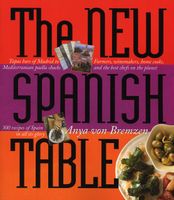Advertisement
Manchego
Appears in
Published 2005
Mentioned by Cervantes in Don Quixote, Manchego is produced from the milk of Manchega-breed ewes, who graze on the arid planes of the central La Mancha region. Spain’s best-known cheese varies in quality; when good it is rich, oily-textured and vaguely briny, with the long finish of a noble wine. Manchego can be fresh, seimcured, or cured, and aged anywhere from two months to more than a year. The mature cheese develops a crumblier texture and a salty complexity. Marinate cubes of semicured Manchego in olive oil and herbs, and serve it with drinks alongside marcona almonds and green olives. Aged Manchego makes a terrific last course; it’s classically paired with membrillo (quince paste), honey, or dried figs.


